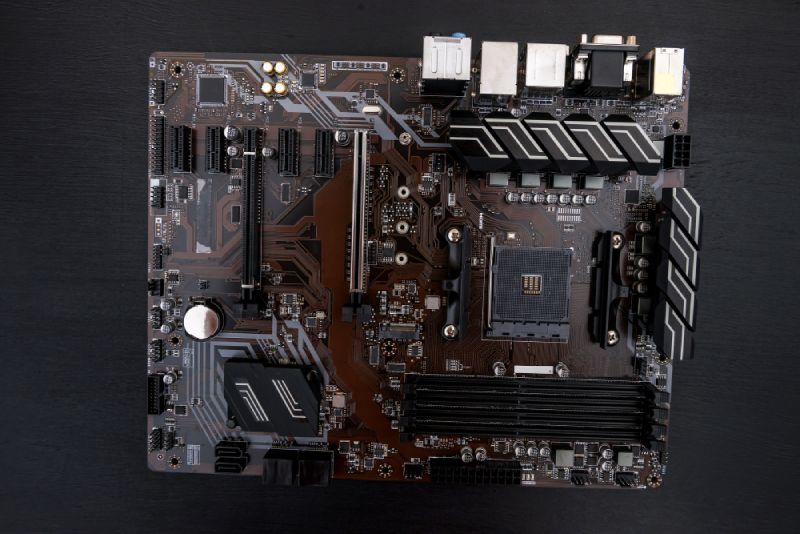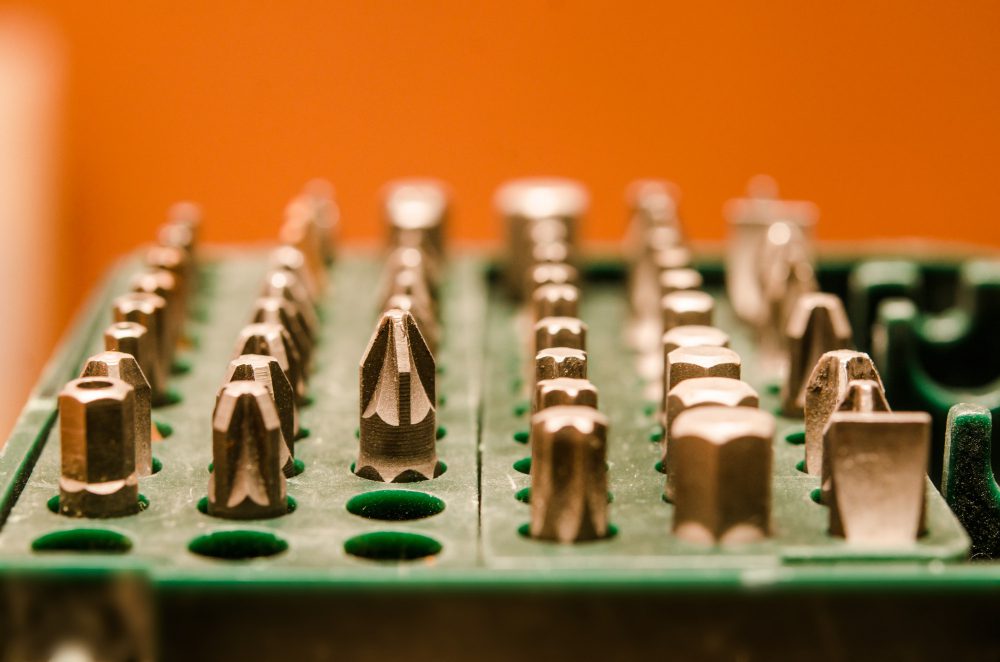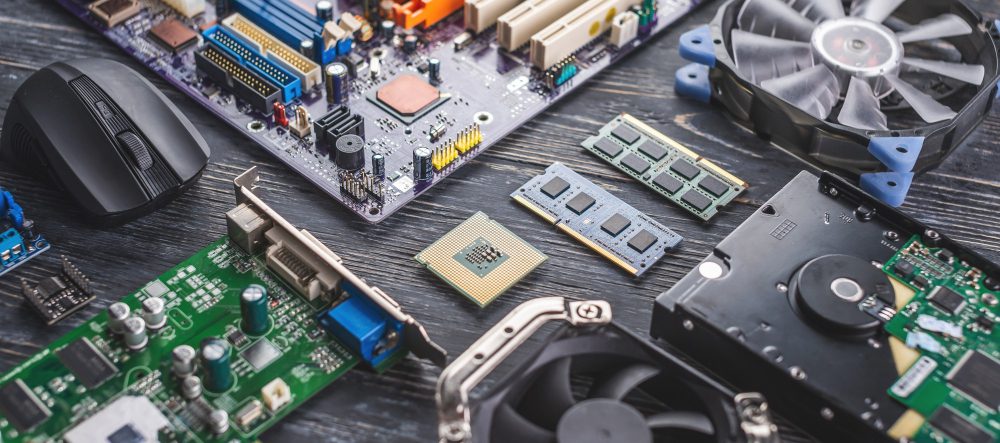What does the motherboard do in a PC?
The motherboard is the central component of a personal computer (PC) that plays a crucial role in connecting and coordinating all other hardware components. It serves as a communication hub, allowing different parts of the computer to interact with one another and work together harmoniously. Without a motherboard, a PC would be just a collection of individual parts with no way to function as a cohesive unit.
The Main Functions of a Motherboard
1. Communication: One of the primary functions of a motherboard is to enable communication between different hardware components. It achieves this through various connectors, such as the CPU socket, expansion slots, memory slots, and ports for peripherals. These connectors ensure that data can flow smoothly between the processor, memory, storage devices, graphics card, and other peripherals.
2. Power Distribution: Another critical role of the motherboard is to distribute power to all the connected components. It receives power from the power supply unit (PSU) and regulates it to ensure that each component receives the appropriate voltage and current. This ensures stable operation and prevents damage to the hardware.
3. Central Processing Unit (CPU) Support: The CPU socket on the motherboard is where the processor is installed. The motherboard provides the necessary connections and support for the CPU, allowing it to communicate with other components, access memory, and perform calculations. It also provides power to the CPU and regulates its temperature through onboard sensors and fan connectors.
4. Memory Support: The motherboard provides slots for installing system memory modules, such as RAM. It determines the type and speed of memory that can be used, as well as the maximum capacity supported. The memory modules are essential for storing and accessing data quickly, and the motherboard ensures they are properly connected and integrated into the system.
Expansion and Connectivity
1. Expansion Slots: Motherboards offer expansion slots, such as PCI Express (PCIe) slots, that allow users to add additional components to their PC. These slots are used for installing graphics cards, sound cards, network cards, and various other expansion cards. They enable the system to be upgraded or customized based on specific requirements.
2. Peripheral Connectivity: The motherboard provides numerous ports and connectors to connect peripherals such as USB devices, audio devices, networking cables, and display outputs. These ports are crucial for external communication and enhance the functionality and usability of the PC.
3. BIOS/UEFI: The motherboard contains a firmware known as the Basic Input/Output System (BIOS) or Unified Extensible Firmware Interface (UEFI). This firmware initializes the hardware during boot-up and facilitates the loading of the operating system. It also provides configuration options for various hardware settings, such as CPU frequency, memory timings, and boot order.
“The motherboard acts as the backbone of a PC, providing the necessary connections, power, and support for all other hardware components to function together effectively.”
Why is the motherboard so important?
The motherboard is one of the most crucial components of a computer system. It acts as the central hub, connecting all the other hardware components together and allowing them to communicate with each other.
Connectivity and Expansion
The motherboard provides connectors for all the essential hardware components such as the processor, memory, storage devices, and expansion cards. These connectors ensure that all the components are properly connected and can exchange data efficiently.
Additionally, the motherboard also offers expansion slots, such as PCIe slots, which allow users to add extra components like graphics cards, sound cards, or network cards. This enables users to customize their system according to their specific needs and upgrade it in the future.
Power Distribution
The motherboard plays a vital role in distributing power to the various components of the computer system. It receives power from the power supply unit (PSU) and ensures that the right amount of power is delivered to each component, preventing any damage due to overvoltage or power fluctuations.
BIOS and Firmware
The motherboard also houses the Basic Input Output System (BIOS) or Unified Extensible Firmware Interface (UEFI), which is responsible for initializing the hardware components and booting up the operating system. It contains the instructions necessary for the system to start up and perform essential tasks.
Data Transfer and Memory Management
The motherboard includes buses and controllers that facilitate the transfer of data between different components. For example, the front-side bus (FSB) connects the CPU, memory, and other system components, while SATA ports allow for high-speed data transfer between the motherboard and storage devices.
The motherboard also manages the system’s memory, providing slots for RAM modules and ensuring efficient memory allocation and access for running applications and processes.
“The motherboard is like the nervous system of a computer, connecting and coordinating all the vital components to ensure smooth operation.”
In conclusion, the motherboard plays a critical role in a computer system, providing connectivity, power distribution, firmware, and data transfer capabilities. It acts as the central backbone that allows all the other hardware components to work together seamlessly. Choosing the right motherboard is essential to ensure compatibility with other components and future expansion possibilities.
What Will Happen if the Motherboard is Not Working?
A motherboard is the central hub of a computer system. It houses various components such as the CPU, memory, and expansion slots, allowing them to communicate and work together to execute tasks. However, when the motherboard is not working properly, it can have a significant impact on the overall functionality of the computer.
No Power or Booting Issues:
If the motherboard is not functioning correctly, one of the most common signs is a complete lack of power or booting issues. When you press the power button, nothing happens, or the system fails to start up. This could be due to a faulty power supply connector on the motherboard or a failure in the motherboard’s power delivery system.
Unstable System:
An unstable system is another consequence of a malfunctioning motherboard. The computer may freeze or crash frequently, even during simple tasks. This instability can be caused by damaged or faulty components on the motherboard, such as capacitors or integrated circuits.
Hardware Component Failures:
A dysfunctional motherboard can also lead to the failure of other hardware components. For example, if the motherboard’s chipset fails, it can affect the communication between the CPU and memory, causing the computer to experience memory-related errors or even prevent it from booting altogether.
Peripheral Device Malfunctions:
The motherboard facilitates the connection between the computer and peripheral devices such as keyboards, mice, and external storage devices. If the motherboard is not working correctly, these devices may not function properly or may not be recognized by the system.
Data Loss:
In some cases, a faulty motherboard can result in data loss. If the motherboard’s disk controller malfunctions, it may prevent the hard drive from being accessed or cause incorrect data to be written or read, potentially leading to corrupted files or an inability to access stored data.
It is crucial to diagnose and resolve motherboard issues promptly to avoid further damage to the computer and prevent data loss. Consulting a professional technician may be necessary to accurately identify and repair the problem.
Is the motherboard the brain of the computer?
The motherboard is considered to be the backbone of any computer system, but is it really the brain? Let’s explore this question further!
Understanding the Role of the Motherboard
The motherboard is a crucial component of a computer that connects all the hardware components together. It provides power and data communication pathways for essential components such as the CPU, RAM, storage devices, and expansion cards.
While the motherboard plays a vital role in facilitating communication between different components, it is not technically the brain of the computer.
Defining the Brain of the Computer
The brain of a computer refers to the Central Processing Unit (CPU). The CPU performs the bulk of the calculations and executes instructions required for various tasks and processes.
“The CPU can be thought of as the brain, while the motherboard acts as the nervous system connecting all the parts together.”
Importance of the Motherboard
The motherboard is undoubtedly a critical component that allows the CPU, memory, storage, and other peripherals to function together. Without a properly functioning motherboard, the computer cannot operate efficiently or at all.
Think of the motherboard as the foundation on which the brain (CPU) and other components rely upon for successful operation.
Components and Connectivity
The motherboard houses numerous slots, connectors, and ports that facilitate connectivity and expandability. Some common components found on a motherboard include:
- CPU Socket
- RAM Slots
- PCIe Slots for Graphics Cards, Sound Cards, etc.
- SATA Ports for Hard Drives and SSDs
- USB Ports
- Ethernet Port
Does the motherboard affect gaming?
When it comes to building a gaming PC, choosing the right components can make all the difference in terms of performance. While most gamers focus on selecting a powerful graphics card and a fast processor, the motherboard is often overlooked. However, the motherboard plays a crucial role in gaming performance and can significantly impact your overall gaming experience.
The Importance of a Quality Motherboard
A quality motherboard provides a stable foundation for your gaming system. It determines the compatibility of other components and affects their overall performance. The motherboard acts as the central hub that connects the CPU, RAM, storage devices, and other peripherals. It also houses essential components such as the chipset, power delivery system, and expansion slots.
One of the key factors that determine whether a motherboard is suitable for gaming is its chipset. High-end motherboards often feature the latest chipsets, which offer better performance and support for advanced features. Additionally, a good motherboard will have sufficient expansion slots to accommodate multiple GPUs or additional storage options.
Impact on Gaming Performance
The motherboard affects gaming performance in several ways. Firstly, it influences the speed at which data is transferred between the CPU, RAM, and other components. A motherboard with faster data transfer speeds can improve overall system responsiveness and reduce input lag during gameplay.
Another crucial aspect influenced by the motherboard is overclocking potential. Overclocking allows users to increase the clock speed of their components, resulting in improved performance. A motherboard with robust power delivery and efficient cooling options can enhance the stability and potential overclocking capabilities of your CPU and RAM.
Compatibility and Future Upgrades
Choosing the right motherboard ensures compatibility with the latest gaming technologies and allows for future upgrades. High-end motherboards often come with additional features such as built-in Wi-Fi, Bluetooth, and superior audio solutions, enhancing your overall gaming experience.
It’s essential to select a motherboard that not only meets your current requirements but also allows for potential upgrades down the line. For example, if you plan on upgrading to a newer generation CPU or adding more RAM, choosing a motherboard with the appropriate socket type and memory slots is crucial.
In conclusion,
while the motherboard might not directly impact gaming performance as significantly as the graphics card or processor, it plays a vital role in overall system stability, compatibility, and future upgrade options. Investing in a high-quality motherboard can provide a solid foundation for your gaming PC and ensure optimal performance in the long run.
Can a computer run without a motherboard?
A computer’s motherboard is one of the most important components, acting as the central hub that connects all other hardware components together. It houses the CPU, RAM, and other essential parts necessary for the computer to function. So, the question arises: Can a computer run without a motherboard? The simple answer is no.
The Role of the Motherboard
The motherboard serves as the backbone of any computer system. It provides electrical connections and pathways for data transmission between all hardware components. It also manages the power supply, allowing the computer to receive the required voltage. Without a motherboard, these crucial functions cannot be performed.
Components Dependent on the Motherboard
Several components rely on the motherboard to function properly:
- CPU (Central Processing Unit): The CPU is the brain of the computer and plugs directly into the motherboard.
- RAM (Random Access Memory): The RAM modules are inserted into slots on the motherboard to provide temporary storage for data and instructions being actively used by the CPU.
- Expansion Cards: Graphics cards, sound cards, and network interface cards all connect to specific slots on the motherboard to extend the computer’s capabilities.
Alternatives to Running without a Motherboard
While a computer cannot function without a motherboard, there are alternatives to running a traditional desktop computer. Some options include:
- Single-board computers: These compact devices, such as Raspberry Pi, integrate the essential components of a computer into a single board. They have built-in CPUs, RAM, and other features, removing the need for a separate motherboard.
- Cloud computing: By relying on cloud services, users can access and interact with computer resources remotely without the need for physical hardware components.
“The motherboard is like the nervous system of a computer, connecting all the essential parts to make them work together.” – Computer Enthusiast
In conclusion, it is not possible for a computer to run without a motherboard due to its critical role in connecting and managing all hardware components. However, there are alternative options available for specific use cases where traditional desktop computers are not necessary.
Conclusion
In conclusion, while the motherboard is a critical component that allows all the hardware to work together, it is not technically the brain of the computer. The CPU, commonly referred to as the brain, performs the actual processing and execution of instructions. Nevertheless, a well-functioning motherboard is vital for the overall performance and functionality of a computer system.



